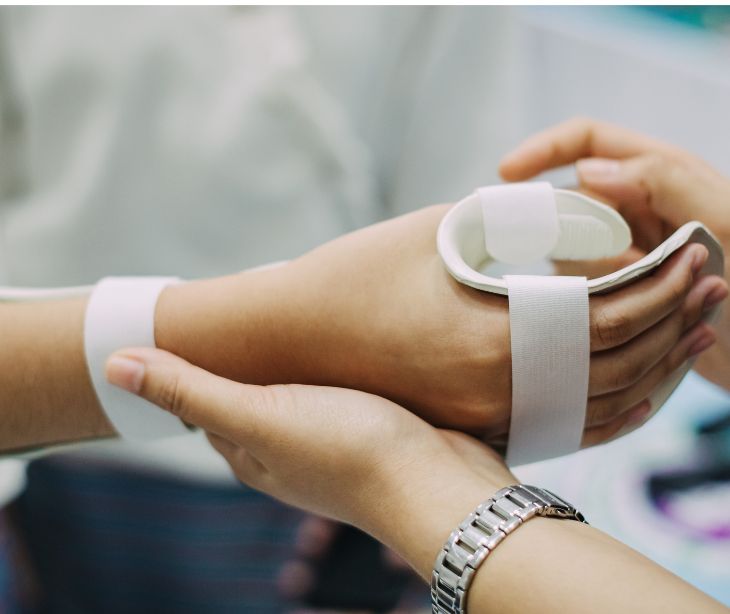3 min read
How occupational therapists can use secure email to improve patient outcomes
Sara Uzer March 30, 2023

Email offers a quick and convenient way for occupational therapists to follow up with patients after sessions, send additional resources, and monitor progress on a regular basis. This information may include individualized treatment plans, as well as recommended activities and adaptive equipment tailored to each patient's unique needs and goals.
Occupation-Specific Email Communication
Consider sharing occupation-specific resources and recommendations in email communication. For example:
- Recommendations for home modifications: Suggest simple home modifications or assistive devices that can make daily tasks easier for patients with disabilities, such as installing grab bars or using adaptive utensils.
- Activity analysis: Break down complex tasks into smaller steps and provide written or visual instructions to help patients better understand and practice the activities independently.
- Collaborate with other healthcare professionals: Share updates on the patient's progress with relevant healthcare professionals, such as physical therapists, speech therapists, or physicians, to ensure a holistic approach to care.
- Encourage engagement in meaningful activities: Share resources on local community programs, support groups, or adaptive sports tailored to the patient's interests and abilities to promote engagement in meaningful activities and enhance overall well-being.
- Use standardized assessments: Share results of standardized assessments (e.g., COPM, MOHO, FIM) with the patient and other healthcare professionals to track progress and guide treatment planning.
- Share educational materials: Provide patients with written or visual materials on self-management strategies, energy conservation techniques, or ergonomic principles specific to their needs and goals.
- Discuss progress and goal-setting: Use secure email communication to discuss the patient's progress, address concerns, and set realistic goals to keep them motivated and engaged in therapy.
However, it's critical to ensure that these emails are sent securely to remain HIPAA compliant. Keep reading to learn more about how occupational therapists can safely use email communication to keep patients on track with their care while addressing occupation-specific concerns.
Strengthen your basic security measures
All therapists who submit electronic billing are considered covered entities under HIPAA. This means they must put protective measures in place to safeguard patients' PHI.
First, use strong, unique passwords that incorporate numbers and special characters. It is equally crucial for these passwords to be changed regularly.
More security strategies for practices to follow include enabling two-factor authentication and configuring firewalls that limit email system access to authorized staff.
In addition, consider using email-specific antivirus software and filters. These tools help scan incoming and outgoing messages for potentially harmful activity, which adds an extra layer of protection from security threats.
Train your staff
Under the HIPAA Privacy Rule, covered entities are required to provide employees with HIPAA compliance training.
This training should include specific policies for handling PHI over email, such as avoiding including PHI in subject lines or accessing emails on public Wi-Fi.
And with human error as a leading cause of email-related HIPAA breaches, educating staff on the signs of phishing emails and other malicious social engineering tactics is especially critical.
Organizing simulated phishing attacks can provide further support by testing employees' knowledge and determining any weaknesses to focus on.
In addition, reinforce best practices for reducing risk, such as double checking sender names for inconsistencies and refraining from clicking unexpected links or attachments.
Use a HIPAA compliant email service
Although email security tools and proper training can help occupational therapists protect patient data, mistakes are inevitable. That's why it's wise to use a HIPAA compliant email platform to cover all your bases.
Under HIPAA, PHI must be safeguarded "at rest." You must obtain a business associate agreement (BAA) if you use a third-party email provider.
Many popular email platforms like Gmail and Yahoo do not sign a BAA, which means there is no guarantee that your stored information is secure.
HIPAA also requires data to be protected in transit, which is where encryption becomes particularly crucial.
Standard email is not always secure. In fact, Google's data confirms that only 87% of email sent with Gmail is encrypted. And that 87% isn't enough. Only 100% encryption is acceptable to meet HIPAA standards.
Therefore, the safest approach for occupational therapists is to work with a third-party HIPAA compliant email provider that offers strong encryption.
Related: How to send HIPAA compliant emails
Conclusion
Email is a valuable way for occupational therapists to improve adherence to treatment plans, monitor progress, and provide personalized resources and recommendations.
By strengthening security measures and using a HIPAA compliant email platform, occupational therapists can enhance patient outcomes while protecting sensitive data.
Subscribe to Paubox Weekly
Every Friday we'll bring you the most important news from Paubox. Our aim is to make you smarter, faster.




